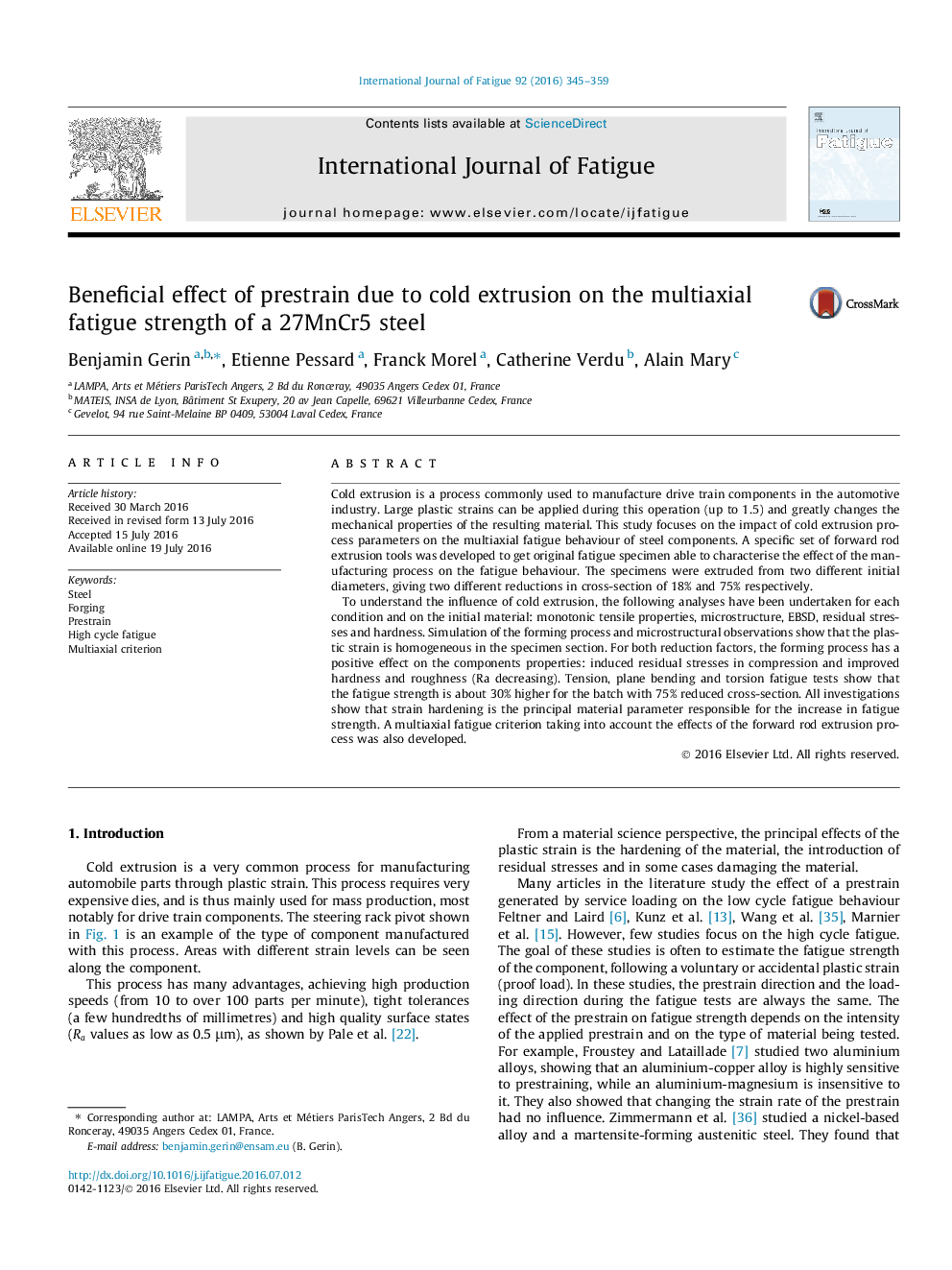| کد مقاله | کد نشریه | سال انتشار | مقاله انگلیسی | نسخه تمام متن |
|---|---|---|---|---|
| 774786 | 1463736 | 2016 | 15 صفحه PDF | دانلود رایگان |

• Tension, bending and torsion fatigue tests were performed on cold-forged specimens.
• The prestrain introduced during extrusion increases the high cycle fatigue limit.
• Prestrain also affects hardness and microstructure and introduces residual stresses.
• Tension and torsion fatigue limits are linked to hardness through simple models.
• A multiaxial fatigue model integrates the effects of prestrain and residual stresses.
Cold extrusion is a process commonly used to manufacture drive train components in the automotive industry. Large plastic strains can be applied during this operation (up to 1.5) and greatly changes the mechanical properties of the resulting material. This study focuses on the impact of cold extrusion process parameters on the multiaxial fatigue behaviour of steel components. A specific set of forward rod extrusion tools was developed to get original fatigue specimen able to characterise the effect of the manufacturing process on the fatigue behaviour. The specimens were extruded from two different initial diameters, giving two different reductions in cross-section of 18% and 75% respectively.To understand the influence of cold extrusion, the following analyses have been undertaken for each condition and on the initial material: monotonic tensile properties, microstructure, EBSD, residual stresses and hardness. Simulation of the forming process and microstructural observations show that the plastic strain is homogeneous in the specimen section. For both reduction factors, the forming process has a positive effect on the components properties: induced residual stresses in compression and improved hardness and roughness (Ra decreasing). Tension, plane bending and torsion fatigue tests show that the fatigue strength is about 30% higher for the batch with 75% reduced cross-section. All investigations show that strain hardening is the principal material parameter responsible for the increase in fatigue strength. A multiaxial fatigue criterion taking into account the effects of the forward rod extrusion process was also developed.
Journal: International Journal of Fatigue - Volume 92, Part 1, November 2016, Pages 345–359